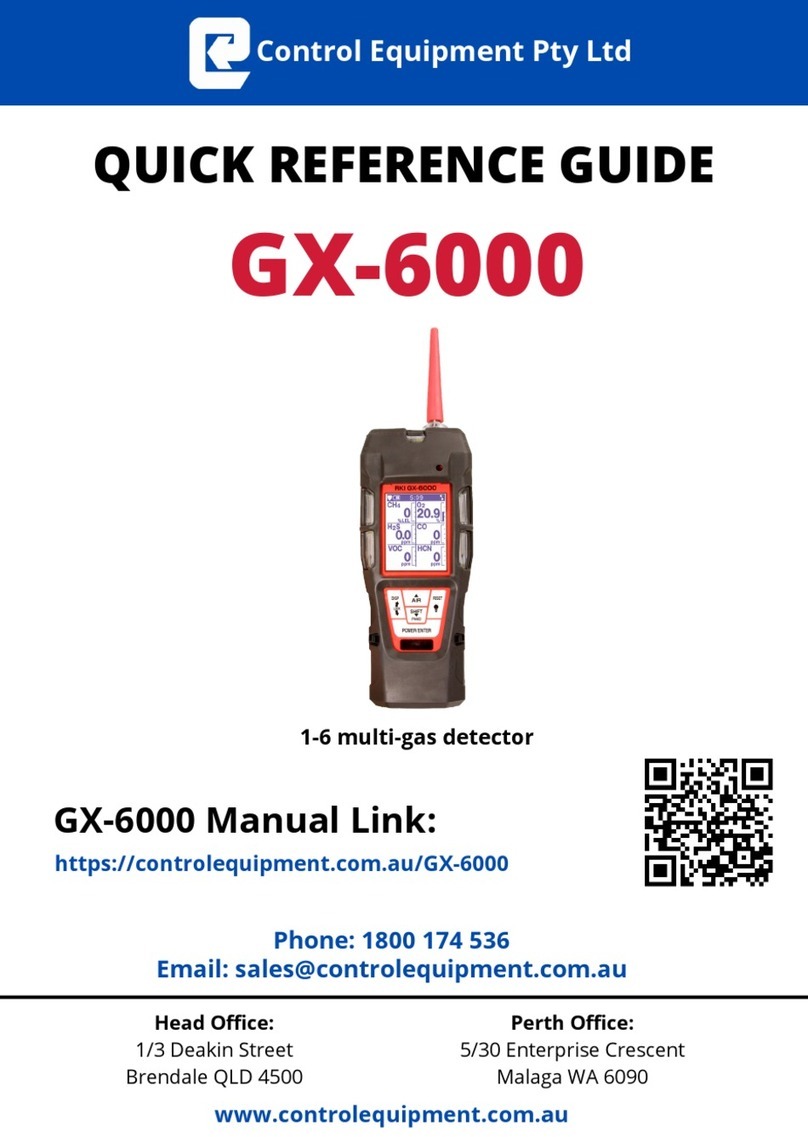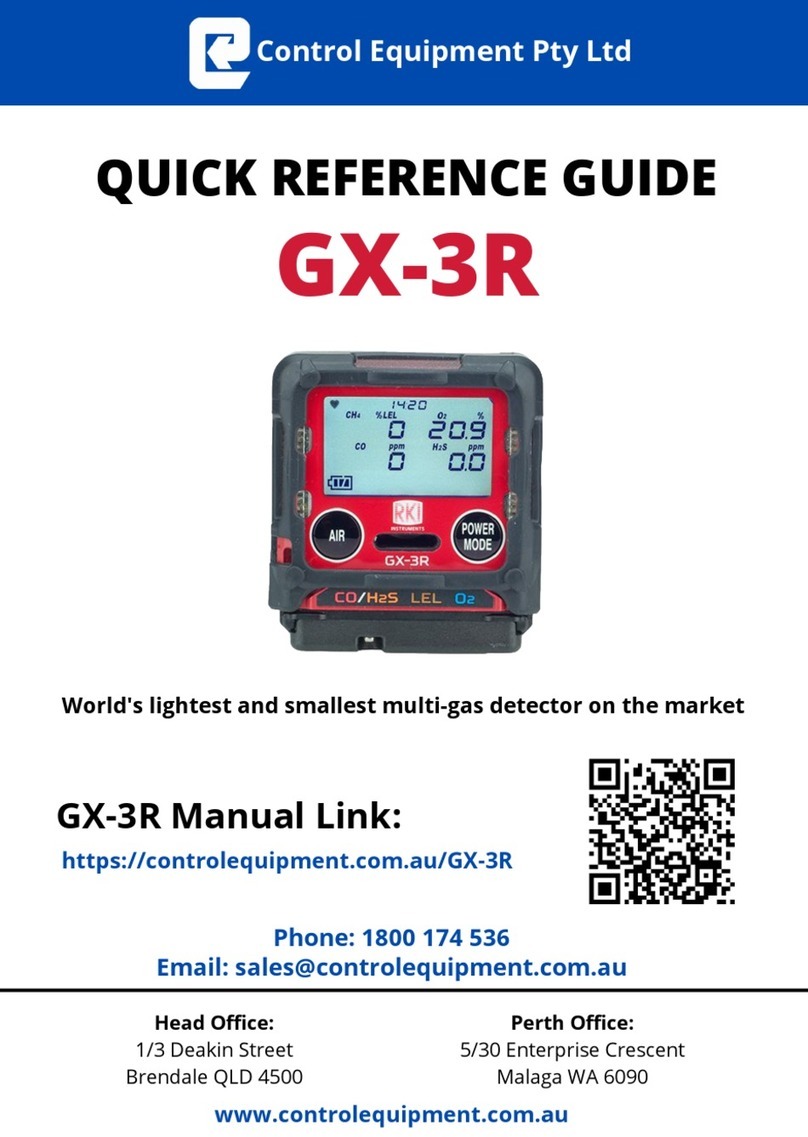
Chapter 1: Introduction
Overview
This chapter briefly describes the GX-Force portable gas monitor. This chapter also describes the GX-
Force Operator’s Manual (this document). Table 1 at the end of this chapter lists the specifications for
the GX-Force.
About the GX-Force
Using an advanced detection system consisting of up to three gas sensors, the GX-Force personal
four-gas monitor detects the presence of combustible gas, oxygen (O2), carbon monoxide (CO), and
hydrogen sulfide (H2S) simultaneously. The GX-Force’s compact size and easy-to-use design make it
ideally suited for a wide range of applications, including sewage treatment plants, utility manholes,
tunnels, hazardous waste sites, power stations, petrochemical refineries, mines, paper mills, drilling
rigs, and fire fighting stations. The GX-Force offers a full range of features, including:
•Simultaneous monitoring of one to four gases
•Liquid crystal display (LCD) for complete and understandable information at a glance
•Ultrabright alarm LEDs
•Distinctive audible/vibrating alarms for dangerous gas conditions and audible alarms for unit
malfunction
•Microprocessor control for reliability, ease of use, and advanced capabilities
•Data logging functions
•Alarm trend data
•STEL, TWA, and over range alarms
•Peak readings
•Built-in time function
•Lunch break feature
•CSA “C/US” classified as intrinsically safe (pending, see page 11)
WARNING: The Model GX-Force detects oxygen deficiency, elevated levels of oxygen,
combustible gases, carbon monoxide, and hydrogen sulfide, all of which can be
dangerous or life threatening. When using the GX-Force, you must follow the
instructions and warnings in this manual to assure proper and safe operation of the
unit and to minimize the risk of personal injury. Be sure to maintain and periodically
calibrate the GX-Force as described in this manual.
CONTROL EQUIPMENT Pty Ltd
www.controlequipment.com.au





























